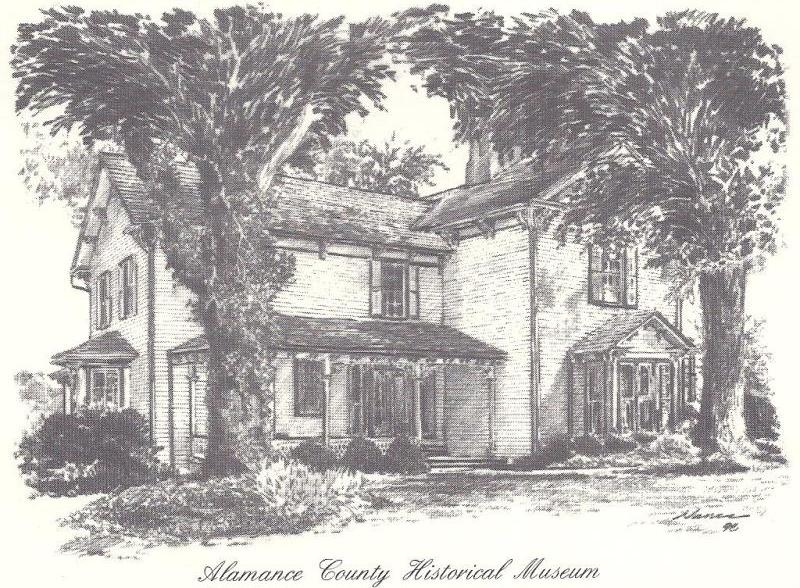The museum is located on part of a 1,693-acre grain plantation, known in the 19th century as “Oak Grove.” The plantation was owned by three generations of the Holt family: Michael Holt III; his son, E.M. Holt; and grandson, L. Banks Holt. Ancestors of the Holts came to the Virginia Colony from Bavaria in 1714; by the 1740s they immigrated to Piedmont North Carolina where they settled along the headwaters of Alamance Creek.
The plantation house – now the museum – was constructed in three stages. The earliest portion of the house, built in 1790, consisted of a two-room dwelling know as a “dog-trot.” This small residence was enlarged in 1800, and again in 1875. The 1875 addition resulted in the “Italianate Revival” character of the house, with its characteristic bay windows, heavy cornice brackets, and ornate sawn work. The house is surrounded by original outbuildings, including a 19th century granary, barn, corn crib, and carriage house. The site is also enhanced by a pergola, flower gardens, Holt family cemetery, and the reconstructed summer kitchen.
At the outbreak of the Civil War there were 51 enslaved African Americans living at Oak Grove. Slaves resided in cabins in two distinct slave rows – one immediately behind the main house and another located across Highway 62. Slaves were buried in a separate cemetery, sited about one-half mile from the plantation house.
In 1837, E.M. Holt established the “Alamance Cotton Factory” at the Village of Alamance. By 1853 the Holts were producing woven fabrics known as “Alamance Plaids” these fabrics have the distinction of being the first colored cotton material commercially manufactured in the southern United States. By 1900 the Holt family owned 24 cotton mills in Alamance County. Portions of these mills were consolidated in 1924 to form the core of Burlington Industries
At this death, in 1884, E.M. Holt was considered the wealthiest man in North Carolina. His son, Thomas Holt, became governor of the state in 1891
The Museum Today
The museum consists of three period rooms on the first floor – parlor, music room, dining room – with mid-nineteenth century furnishings and accessories. These include Tiffany silver, fine hand-painted Limoges porcelain, portraits by William Garl Browne and furniture by free black artisan Thomas Day.
Upstairs there are three rooms: one period bedroom and two rooms used for permanent artifact collections and changing exhibits including antique clothing, quilts, military artifacts, and Alamance County pottery.
Examples of the “Alamance Plaid”, the first commercially-woven colored cotton fabrics manufactured in the American South, are displayed, together with photography of early textile mills and their employees. The museum collection also includes Mort Künstler’s original oil painting entitled, “Alamance Plaids”.
Visitors to the plantation complex may also view the restored granary, corn crib and carriage house, as well as a reconstructed 19th century summer kitchen. The grounds include a lovely garden of period roses, a pergola, and the Holt family cemetery containing graves dating to the 1700s. Strolling through these lovely grounds, visitors experience a now vanished life-style.
Drawing by David Nance